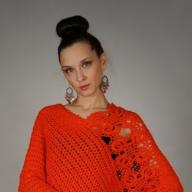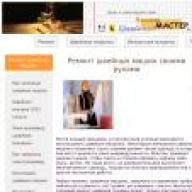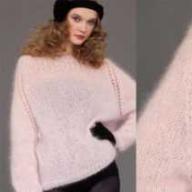The appearance of a business person is his calling card. The way you look can tell your partners and clients what kind of professional you are. After all, whatever one may say, they are greeted all the same by their clothes.
But buying a presentable business suit is half the battle. The most difficult thing is to choose a jacket, trousers, shirt and accessories so that they perfectly emphasize your style and status.
Below you will find some practical tips on this, as well as helpful infographics to help you choose a suit for your figure.
1. General view. After putting on the suit, take the most natural position for yourself. Do not pull in your stomach and straighten your shoulders - you should see how the suit will sit in everyday life, and not in front of the mirror in the fitting room. Then raise your hands up, to the sides, walk a little. If your pants or jacket are holding you back, then you missed the model or size.
2. Shoulders. Jacket shoulders should not hang down or wrinkle. The sleeve seam should start exactly where the shoulder ends. If it hangs off your shoulder or, on the contrary, creates a "wave", then the jacket is either big or small for you.
3. Pants. The fit of the trousers should match the shape of your thighs. There are several nuances here. First, the waistline should always be in place, whether you are sitting or standing. Secondly, the folds of the trousers should correspond to the shape of the body - when you are just standing, the trousers should not wrinkle either in the front or in the back. Thirdly, the trousers should not "stick to" the hips too much (in a hipster way) - it will be uncomfortable to sit, and the people around will be aware of what kind of underwear you prefer. Fourth, the stepping line should be high enough so that there is no sagging. Otherwise, a "bloomer effect" will be created. Pants with a low armhole, of course, have the right to life, but not in a business suit.
4. Pants length. Pants are too long if the leg "lies" on the boot, forming a large fold. Pants are too short if the leg does not touch the shoe and the socks are visible. Trousers are of the correct length, if the cuff of the leg rests slightly on the boot, forming a subtle elegant fold. Remember: if your size is not available, it is better to buy trousers a little longer - they can be folded up in the atelier.
5. Buttons. To check if your jacket is too small in girth, stand in front of a mirror and fasten one top button. A well-fitting single-breasted jacket has the lapels and hemlines neatly converging with each other, the button fastens loosely, without tension. If the jacket is too small for you, then an ugly fold in the shape of the letter "X" will form on your stomach, from under which a shirt will peep out from above and below, and the button will bulge, as if it’s about to come off. If the jacket is too big for you, then the floors will overlap, like a wraparound robe.
6. Sleeve length. The golden rule of the ratio of the length of the sleeve of a jacket and the length of the sleeve of a shirt is 1.5 cm. This is how the cuff of a shirt should "look out" from under a jacket. If the cuff is completely hidden, then the sleeve of the jacket is too long, if completely visible, it is too short. For shirts with short sleeves, use the wrist joint to determine the ideal sleeve length. The sleeve of the jacket should be slightly longer than the fold of the wrist.
7. Jacket length. The jacket should be long enough to cover the curves of the buttocks and short enough to reveal as much of the leg line as possible. There are two ways to determine the ideal jacket length. First: measure the length of the back from the collar to the floor, and then divide the result by 2. Second: use your hands as a "ruler". To do this, you need to lower them at the seams (without pulling or straining on purpose) - the jacket should end approximately in the middle of the palm. However, this method has an "error" - the measurement accuracy strongly depends on the individual anatomical characteristics of a person.
8. Collar. The collar of the jacket should fit well against the collar of the shirt, which, in turn, should perfectly wrap around the neck. Ideally, that is, not "choke" or "hang out". Stand sideways to the mirror and look at the collar. If the collar is pulled back or folds are formed under it, then this jacket will not suit you. The reasons may be different - the wrong size, does not fit in the shoulders, etc.
The following infographic will help you to visualize the described tips.
Or rather, from attempts to answer their questions like "Is it so necessary to keep it short, or is this shirt small for me?"
So I decided to answer all the questions about the length of the sleeves at once. What it should be, why and what it depends on. Ready to record?
The length of the sleeves is most critical for coats and jackets, and if we talk about style, then the business one is the most picky about this point, especially in the case of men. But we have a female portal, so we are talking about ours.
According to the classical canons, the sleeve of the coat ends at the beginning of the second phalanx of the thumb, of the jacket - 2-3 cm above this mark (to the base of the finger). There is an exception: in a jacket in the so-called. In a Chanel suit (and others like them), the sleeve is a little shorter, by about 1-2 cm. It just so happened.


Unlike our halves, we can easily apply for work in a shirt or blouse, even if we work in law enforcement agencies, a legal or financial company, or a ministry.
But regarding the long, the rules of a strict business dress code are similar: if you wear them under a jacket, about a centimeter (for men, two) of the cuffs should be visible. In lax - do what you want.


In everyday style, great liberties are allowed: the length of the sleeve in a jacket can vary by itself, plus it can be rolled up, and the cuffs of a shirt or blouse are not required to look out.
I will talk about cropped sleeves in jackets a little later.



Other clothes are not at all so complicated in this regard, although there are some nuances. A sweater or a sleeve will be about the same length as in a jacket or longer, but shorter and will hardly be sewn, and you will hardly want to wear it personally for you (a sweater is a cozy and warm thing, a long sleeve emphasizes this).
Sweatshirts and bombers have an elastic cuff, which normally reaches the base of the hand, but the sleeve can be pulled up (and it looks more fashionable and harmonious than the initially shortened sleeve with a cuff, especially wide).
In Victorian blouses (as with many flared cuffs) the sleeve will even be too long, almost covering the thumb, and that's okay. In dresses, thin sweaters, knitted tops, there are no rules at all that are purely conventional.




But you should always remember about the limitations imposed by your own figure and lifestyle. About the second, I think you yourself will guess: for example, it is unwise to sweep the drawings with long wide sleeves of a snow-white sweater. I'll tell you a little more about the first one.
If your hands are full (very full!), It is better to hide them under flying sleeves - up to the elbow or wrist. If everything is not so tragic, but still the arms are plump - give up tight sleeves that end at the widest part (which is usually the upper two-thirds of the zone between the elbow and shoulder).
A wide sleeve of the same length, by the way, has the opposite effect and makes the arm thinner. In general, it is better to hide the upper part of the arm and show the part from the elbow to the wrist.


A small hand is a reason to give up sleeves reaching to the wrist and below, three-quarters is much better. Conversely, a disproportionately large brush is worth starting to wear long enough sleeves, also with cuffs.



Returning to the question at the beginning of the article: the answer to it is not as straightforward as it seems. Yes, sometimes the thing is small, but this is often seen by other signs - it squeezes in the chest, in the neck, in the thighs, and wrinkles in the armpits. But sometimes the thing fits, but the sleeve is still short - how so?
At first, it may be a matter of growth, and not just in complexion. Secondly, there is indeed a tendency for the sleeves to be shortened somewhat. It's not three quarters yet, but it's not a full sleeve anymore. I do not know a scientific explanation for this fact, but I can offer my own. Life is accelerating, we have a lot of different things to do, and every time it’s uncomfortable to roll up our sleeves (literally).
Plus, it accentuates the slim, graceful wrists. Here the sleeves are made immediately shortened. Even in outerwear, albeit a little, but still.
However, another version is also possible: clothes are usually sewn for a height of 170-175 cm, and those who are shorter have to hem their sleeves. Initially, the shortened sleeve looks fashionable on tall ones (for example, on the models in these photos) and, according to all the rules, on everyone else. Bingo!




However, no one asks us to freeze, because the second trend is also connected here - a deliberate demonstration of the second layer of clothing, and not 1-2 cm, as we said above, but much more - from 5 to 8 cm.


Remember that cropped sleeves create a less formal style than “normal”, which may not always be appropriate in some work situations. But even if this is not so important to you, in any case, another question is relevant: how not to miss and not look like you put on your daughter's sweater? Alas, you have to focus on your perception and nothing more.
But remember that a small discrepancy looks touching on young skinny girls, and even then not always, on older women - on the contrary, it is rather ridiculous. If in doubt, it's best to keep looking.
In general, the issue of sleeve length is no longer as acute as it was 10 years ago, and it is up to you to decide exactly - as well as the dilemma about which canon to follow, fashionable or classic.
Photo zara.com, massimodutti.com
At first glance, the question seems obvious - but this is only at first glance. Yet the vast majority of men continue to wear shirts that are two sizes too large for them. The wrong size shirt is uncomfortable and makes you look unprofessional. In order not to hit your face in the dirt, remember how a man's shirt should sit.
Collar
To size: The collar touches the skin along the entire perimeter of the neck, but does not press. You can stick your finger between the collar and throat - anywhere.
The shirt is small: The collar fits so tightly to the neck that it presses on it. You feel the collar on your skin, and it makes you uncomfortable. It is impossible to stick a finger between the collar and the throat.
The shirt is great: The collar does not touch the neck, the shirt rests on the shoulders. Between the collar and the throat, you can easily stick a finger, or even several, without the slightest effort.
Shoulders
To size: Vertical shoulder seam ends at the same place as the shoulder and goes into the sleeve. The armhole (the place where the sleeve meets the main body of the shirt) is large enough not to pull or twist anywhere.
The shirt is small: The shoulder seam ends earlier than the shoulder itself. As a result, part of the sleeve is also on the shoulder. There is tension in the armhole, which causes folds to appear on the shoulder and sleeves.
The shirt is great: The shoulder of the shirt is longer than your shoulder and extends into the bicep area. The armholes are too big, you can't feel them.
Torso
To size: The buttons are fastened comfortably, the shirt collapses easily, and the buttons are right in the center. The shirt sits on you without sagging.
The shirt is small: The buttons are hard to fasten, the body is visible between them, folds are gathering. Due to the tightness of the shirt, the sleeves are also pulled.
The shirt is great: Excess fabric sags over the chest and abdomen, the shirt is inflated in the wind by the sail. The shirt walks around the body with a shake. If this shirt is tucked into trousers, it hangs over the belt.
Sleeves
To size: The sleeve is not much wider at the top than in the cuffs - it resembles a cone. When the arm hangs straight, the sleeve is free, the elbow does not stand out. The sleeve should be loose along its entire length, not just at the top or bottom.
The shirt is small: The sleeve seems to fit perfectly when the arm is hanging, however, with the slightest movement of the shoulder, the elbow pulls.
The shirt is great: There is so much fabric that gravity pulls it down, and the sleeve sags in a bag over the cuff. An overly loose sleeve wraps around the elbow or bicep.
Cuffs
To size: The cuff fits snugly around the body, but there is sufficient space between the arm and the tissue. A simple test: the shirt should be removed without opening the cuffs. A pair of fingers or a watch should pass between the shirt and the hand.
The shirt is small: It is impossible to take off the shirt without unbuttoning the cuffs. The cuffs fit snugly around the arm. The watch can only be worn over the sleeve, otherwise it will bulge.
The shirt is great: The cuff is so wide that it leaves room for the watch and a little more room for a few fingers. When hands rest on the tabletop, folds come from the cuffs.
The length of the sleeve
To size: The sleeve extends to the base of the hand and covers the wrist bone. If a jacket is worn on top, the shirt sleeve is shown a centimeter and a half from the jacket sleeve. The cuff touches and in some positions covers the wristwatch.
The shirt is small: The cuff does not cover the wrist bone and is not visible from under the sleeve of the jacket.
The shirt is great: The cuff descends to the wrist. If you wear a wristwatch, it remains closed by the sleeve at any time.
Length
To size: When the shirt is straightened out of the trousers, the hem covers it. It should be long enough around the entire perimeter, including the sides, if the hem is uneven, so that it can be tucked into trousers.
The shirt is small: When the shirt is straightened out of the pants, it does not cover the belt. If you tuck it into trousers, on the sides, it barely crawls into the belt and constantly crawls out into the light of day, if you allow a careless movement.
The shirt is great: The hem of the shirt also covers the fly. If tucked into trousers, the fabric will get in the way and crawl between your legs.
When you buy ready-made clothes in the store, you don't have to choose. You can only talk about how well it suited you. A common problem for tall gentlemen is that the standard shirts they wear look like they've grown 10cm on the latest HGH tonight and couldn't find anything with longer sleeves. Long-sleeved shirts are sometimes too big. When you buy a shirt or, you can choose. And in order to make the right choice, you need to understand the basic rules.
How to determine the ideal shirt sleeve length
There is a clear rule: the length of the shirt sleeve is matched perfectly when, when the elbow is bent at a right angle, the cuff of the shirt is at the base of your wrist, but still covers the wrist bone. If you wear a watch while buying, ask to make one of the cuffs (on the wrist where you have the watch) larger in girth, so that the cuff covers the watch as well.
When trying on a shirt, bend your elbow
How op Determine the ideal jacket sleeve length
If for shirts the rule dictates the correct sleeve length rather rigidly, then for jackets there is variability. Having determined the ideal shirt sleeve length, you will understand which jacket sleeve you need to focus on: short, standard, long or super-long. In Soviet times, it was fashionable to wear a super-long sleeve, which reached out to the bones on the phalanges of the fingers. This style has been outdated for a very long time. Preferring such models today, you will look as if you are wearing someone else's jacket. Therefore, more often they strive for a standard one - a little shorter than the shirt sleeves, so that the cuff looks 1-1.5 cm from under the jacket sleeve. You can also choose the “short” version, which is popular among Italians: you can see 3-4 cm of the cuff, along with your fashionable cufflinks and the monogram on the shirt cuff.

To determine the ideal sleeve length, spread your fingers apart and notice the dimple at the base of your thumb. The buttoned cuff of the shirt should reach the beginning of this depression, that is, it should be located 1–2 cm below the narrowest part of the wrist. The width of the cuff is also important: there should be a space equal to the width of one or two fingers between the body and the fabric.
Length of the bottom hem of the shirt
It is easy to determine the correct length of the shirt: its edge, shortened on the side, should hide the belt. A shirt, the shelves of which completely hide the zipper on the trousers, is considered too long - it is difficult to tuck it in neatly, and during movement the fabric will get confused every now and then.
A large assortment of shirts for any figure is presented in the men's clothing salon.
Jacket sleeve length
The sleeve of the jacket should leave the cuff of the shirt 1–2 cm open
The style of the jacket varies, but one thing remains the same - the length of the sleeve. The cuffs of the shirt should protrude 1–2 cm from under the jacket. If they are more open, then it seems that you are wearing a suit that has survived from the school prom. If the shirt sleeves are completely hidden, the jacket will seem too big for you.
Jacket bottom hem length
A classic jacket should cover the buttocks
The rule for choosing a jacket says: the slots should completely cover the buttocks or be shorter by 2-3 cm. But the main thing in choosing a jacket is keeping the proportions of the figure. For example, a classic cut is acceptable for tall ones, and short men should look at cropped models.
The universal length of a jacket is calculated using the formula: the bottom hem halves the distance from the collar to the floor.
Length trousers
At the back, classic trousers should be 1 cm higher than the heel, and in the front, form one fold. To achieve this effect, the bottom of the trousers is sewn at an angle (the back is longer), you can appreciate this even before trying on.
Modern cropped trousers only slightly cover the boots, fully showing the lacing. It looks very stylish, but in this case, the pants should be in a skinny silhouette.
Coat length
It does not hinder movement and looks good on a man of any height.
Shortened models (up to mid-thigh and above) are suitable for active young people of medium or small stature. Please note: the coat must necessarily hide the jacket.
Long coat looks favorably on stately tall men. However, this style can be inconvenient for car owners.
Coat sleeve length
The sleeve of the coat should hide the cuff of the shirt
Polo shirt length
The polo shirt should cover the trouser pockets by 1–2 cm
And worn out, and tucked into trousers. As you can imagine, it is especially important to choose the correct length in the first case. An ideal shirt should slightly cover the pockets of your trousers, but no more than 1–2 cm.
Sweater length
The sweater should not be too long
If you want to look elegant, the sweater should end at the level of the belt. Sleeves should hide the wrists and not extend to the middle of the palm. Remember: rather than turn you into Bigfoot.
Tie length
The end of the tie should be level with the belt buckle
Too short or too long not respectable, but a comical image... The correct length assumes that the end of the tie should be flush with the belt buckle.
When buying an accessory, be sure to tie it in the way you are used to. If you are tall, then the standard tie length may not suit you, so you should give preference to elongated models or reconsider the way you tie the knot.
Socks height
The correct length of socks is determined empirically.
To determine, do a little test: sit on a chair and cross your legs. If there is no strip of skin between the toe and the trousers, then everything is fine. If you can see a part of the lower leg, then you need to choose a different style of socks or use a win-win option - men's golfs.




